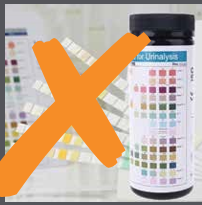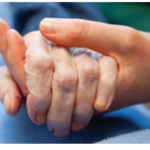Antibiotic use in Australian services (RACS) continues to increase! BUT WHY ? …. COMMON ISSUES
The use of urine dipstick testing as a first step in diagnosing UTIs Prolonged duration of antimicrobial use – The majority of infections should not exceed 7 days of treatment. High rates of topical antimicrobial use, particularly for PRN administration without adequate indication.
Prolonged prophylaxis for conditions not recommended by guidelines, including the use of Methenamine hippurate (Hiprex) Poor documentation of indication, review and stop dates for antimicrobial prescriptions.
Barriers adhering to AMS included
• difficulties in diagnosis of infections (sample collection, cognitively impaired residents),
• staffing issues (off-site general practitioners and pharmacists, nursing staffing levels and workload),
• delayed laboratory services
• family expectations.
Australian Guidelines advise that Urine Dipstick Testing is not the first step for older people. Instead, RACFs are encouraged to use Clinical Pathway.

• A campaign to increase education around Asymptomatic Bacteriuria
• Improve awareness and diagnosis of UTIs in aged care facilities
• To reduce unnecessary antibiotic use
• To support non-pharmacological management in the prevention of UTIs by managing hydration and providing good basic hygiene care
Antibiotics – too much of a good thing?
• Antibiotics are powerful and precious drugs.
• Bacteria can develop antibiotic resistance. This means that antibiotics may not work when a person really does need them and these resistant bacteria can spread very easily in an aged care home setting.
• Side effects such as nausea, stomach upset, and skin rashes are common in older people receiving antibiotics and can cause significant harm.
• Everyone has a responsibility to protect antibiotics and they should only be used when there is strong evidence of a bacterial infection.
Antimicrobial Stewardship (AMS)
The term antimicrobial stewardship provides a systematic approach to optimising the use of antimicrobials.
The goal is to promote in order to maximize the effectiveness of treatment and minimize the potential for risk (including drug resistance and toxicity). This means patients are offered the
✓ right antibiotic
✓ to treat their condition,
✓ the right dose,
✓ the right route,
✓ at the right time and
✓ for the right duration.
The process should be based on an accurate assessment and timely review so as to improve patient outcomes, ensure cost-effective therapy, reduce the risk of adverse effects and emergence of antibiotic resistance
Principles of Antimicrobial Management in RACF
● Therapy should be based on clinical assessment by the GP, ensuring the benefits of the antimicrobial
outweighs the risk of harm.
● The antimicrobial agent used is based on the best available evidence. (Therapeutic Guidelines).
● Clear documentation for all antimicrobial prescriptions including an indication to therapy.
● Resident or Carer awareness of the treatment and potential side effects (informed Consent).
● Regular review and refinement of the antimicrobial therapy should occur based on the resident’s clinical
progress (improvement or deterioration) and available clinical information (investigation results).
● Diagnostic test results to be reviewed in a timely way.
● All key prescribing elements are clearly documented with set policies surrounding fixed-length courses of
treatment and mandatory review dates, particularly for prn prescriptions.
● Infection prevention and control with AMS education offered to nurses, prescribers, and family members of
residents to raise awareness and skill levels in relation to recommended practice,
● Education for non-nursing staff who provide care to residents on the importance of infection prevention
and control and basic personal and hygiene care
● Clear treatment plan with 3-6 monthly review dates for all long-term antibiotic prescribing
ANTIMICROBIAL STEWARDSHIP – AGED CARE HOMES

What can NURSES do to help?
- Take samples for microbiology testing preferably before starting antimicrobials and ensure timely transfer of samples to laboratories.
- Check that the resident is not allergic to the antimicrobial prescribed.
- Administer antimicrobials according to evidence-based guidelines and medication safety principles, such as the nine ‘rights’*.
- Support good documentation; generic name, dose time, route, indication and plan (review and/or stop date).
- Monitor residents to assess clinical response and identify side effects.
- Recognise when treatment is not in line with microbiological results and prompt review of antimicrobial therapy.
- Education residents and carers about antimicrobial therapy.
Getting to Know Your Antibiotics
Aminoglycosides: Gentamicin, Neomycin, and Tobramycin are commonly used in hospitals for surgical prophylaxis. There is an increased risk of renal toxicity and ototoxicity. The dose in the elderly is always calculated based on Creatinine C
Lincosamides: Clindamycin and Lincomycin – Clindamycin is the more commonly used oral Lincosamide recommended as second-line therapy for those who can’t tolerate Penicillins and Cephalosporins. Therapy
is associated with more side effects, particularly diarrhea.Beta Lactams: Cephalosporins and Penicillins Most used oral antibiotics are given can be well absorbed orally, show a g
Macrolides: Azithromycin, Clarithromycin, Erythromycin, and Roxithromycin – They have a relatively broad spectrum of activity with effective treatment in most respiratory tract infections. Erythromycin and Clarithromycin are both potent inhibitors of CYP3A4 and therefore associated with significant drug interactions.
Cephalosporins: – Cefalexin – Moderate Spectrum, orally.– Cefuroime and Cefaclor – are also moderate spectrum with an anti-Haemophilus activity making it more active for respiratory infections. Widespread use of cephalosporins, particularly the broad spectrum ones has been linked with the increasing prevalence of
infections caused by methicillin-resistant Staphylococcus aureus (MRSA), vancomycin-resistant enterococci (VRE),, multiresistant Gram-negative organisms, and Clostridium difficileNitrofurantoin: Active against most organisms that commonly cause UTIs, however activity is dependent on adequate urine concentrations and kidney function. Even mild renal impairment can reduce urine concentration and hence reduce the efficacy of the antibiotic.
Penicillins: Narrow Spectrum Penicillins – Benzylpenicillin – remains the treatment of choice for
susceptible infections (such as pneumococcal pneumonia) – Procaine Penicillin – intramuscular preparation that is often used as an alternative to benzylpenicillin when intravenous therapy cannot be administered.
– Dicloxacillin and Flucloxacillin – Narrow Spectrum Penicillins with antistaphylococcal activity. Absorption is affected by food and has a short half-life, hence given before food four times a day. – Amoxycillin and Ampicillin – Moderate Spectrum Penicillins – Amoxycillin with the Clavulanic acid– Broad Spectrum PenicillinsNitroimidazoles: Metronidazole – Has a significantly broad spectrum of activity as well as an effect on Helicobacter pylori and Protozoa. (commonly used for bacterial Vaginosis, fungal wounds, dental infections, etc. Interacts with alcohol causing significant nausea and CNS effects.
Quinolones: Ciprofloxacin, Moxifloxacin and Norfloxacin – They have very limited use in general practice, except in the treatment of UTIs caused by resistant organisms, prostatitis or resistant bone/joint infection.
Resistance to Quinolones in now wide spread and judicious use is recommended to extend their clinical life. Superinfections with enterococci or Candida species may occur with all QuinolonesChloramphenicol: Broad spectrum antibiotic most commonly found in topical
preparations for eyes and earsRifamycins: Rifampicin – A broad spectrum antibiotic reserved for treatment of MRSA and Mycobaterial infections, as well as Prophylactic therapy in Meningitis and epiglottitis
Folic Acid Antagonists: Trimethoprim and Trimethoprim + Sulfamethoxazole. For the treatment or prophylaxis of uncomplicated urinary tract infections, trimethoprim alone is considered as effective as
trimethoprim+sulfamethoxazole. The combination is restricted to evidence the Trimethoprim alone
not work ing or in MRSA patientsTetracyclines: Doxycycline, Minocycline and Tetracycline – A broad spectrum commonly used for bronchitis, acne and community acquired pneumonia
Fusidate Sodium: Fusidic Acid – it has a narrow therapeutic index but active against Staph aureus, resistance develops readily and hence always used with another antibiotics such as Rifampicin
Glycopeptides: Vancomycin and Teicoplanin – Vancomycin is the more commonly used oral Glycopeptide. Recommended for treatment and prophylaxis in patients with hypersensitivity to Penicillin. Also used for treating some MRSA infections as well as Clostridium difficile, however high risk of developing of Vancomycin-Resistant Enterococci (VRE)
Recommended Antibiotics for Common Infections in Racs
Urinary Infections : (E.coli, Staphylococcus, Proteus, Klebsiella and Enterococcuss). Acute Cystitis
First line therapy – Trimethoprim 300mg orally, daily for 3 days, or Nitrofurantoin 100mg orally, 6 – hourly for 5 days.
Second line therapy – Cefalexin 500mg orally, 12 – hourly for 5 days. Recurrent UTIs
Prophylactic Antibiotic – Trimethoprim 150mg orally, at night or Cefalexin 250mg orally, at night.
Prophylactic therapy is usually recommended at night for 3 – 6 months, then stoppedSkin and Soft Tissue Infections
Erysipelas Cellulitis (unbroken skin)
First line therapy – Phenoxymethylpenicillin 500mg orally, 6 – hourly for 5 days or Cefalexin 500mg orally, 6 – hourly for 5 days.Purulent Cellulitis (associated abscess) First line therapy – Dicloxacillin 500mg orally, 6 – hourly for 5 days orFlucloxacillin 500mg orally, 6 – hourly for 5 days.
Cefalexin is often preferred to Dicloxacillin or Flucloxacillin in patients who have swallowing difficulties,
because the liquid formulation is better tolerated. In most cases, it can also be used for patients with delayed
non-severe hypersensitivity to penicillins.Cutaneous Candidiasis – Diagnosis should be confirmed by microscopy and culture. Removing or modifying
predisposing factors when possible (eg modify personal hygiene, apply emollients to skin folds for prevention,
cease oral antibiotics unless essential) should also be in place alongside antimicrobial therapy.
First line therapy – Clotrimazole 1% cream topically, twice daily for 2 weeks or
Mmiconazole 2% cream topically, twice daily for 2 weeks.Respiratory Infection
Bronchiolitis and Bronchitis usually viral but can develop secondary bacterial infections in some patients.
Antibiotics therapy is not recommended in ALL cases.For non-severe exacerbations of Bacterial BronchiectasisFirst line treatment – Amoxicillin 1g orally, 8 – hourly; 7 – 14 days (depending patient review) or
Doxycycline 100mg orally, 12 – hourly; 7 – 14 days (depending patient review).
In exacerbations of COPD,antibiotics such as amoxicillin+clavulanate, macrolides and cephalosporins are not
recommended for initial therapy because they are not more effective than amoxicillin or doxycycline, and
they expose the patient to harms from unnecessary broader-spectrum treatment.Community-Acquired Pneumonia (CAP)
CAP in aged care facilities – First line therapy – Amoxicillin 1g orally, 8 – hourly; 7 – 14 days or
Doxycycline 100mg orally, 12 – hourly; 7 – 14 days (depending patient review) For patients initially treated with amoxicillin who are not improving after 48 hours (more likely in patients with comorbid lung disease),
Amoxicillin+clavulanate 875+125mg orally, 12 – hourly; 7 – 14 days can be used.


